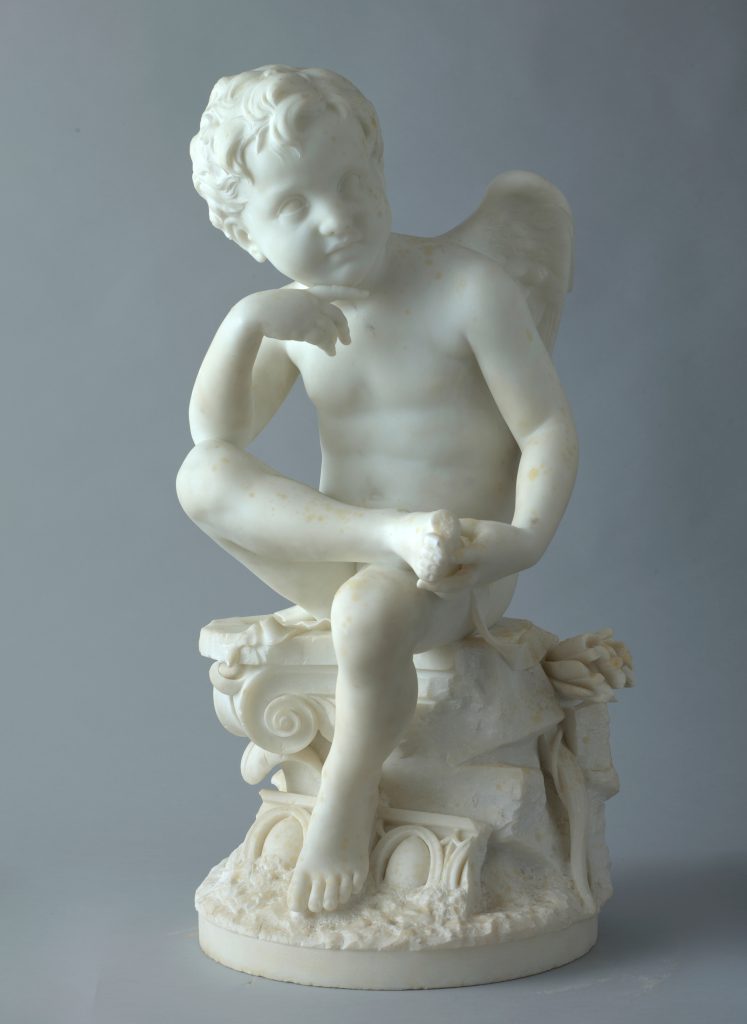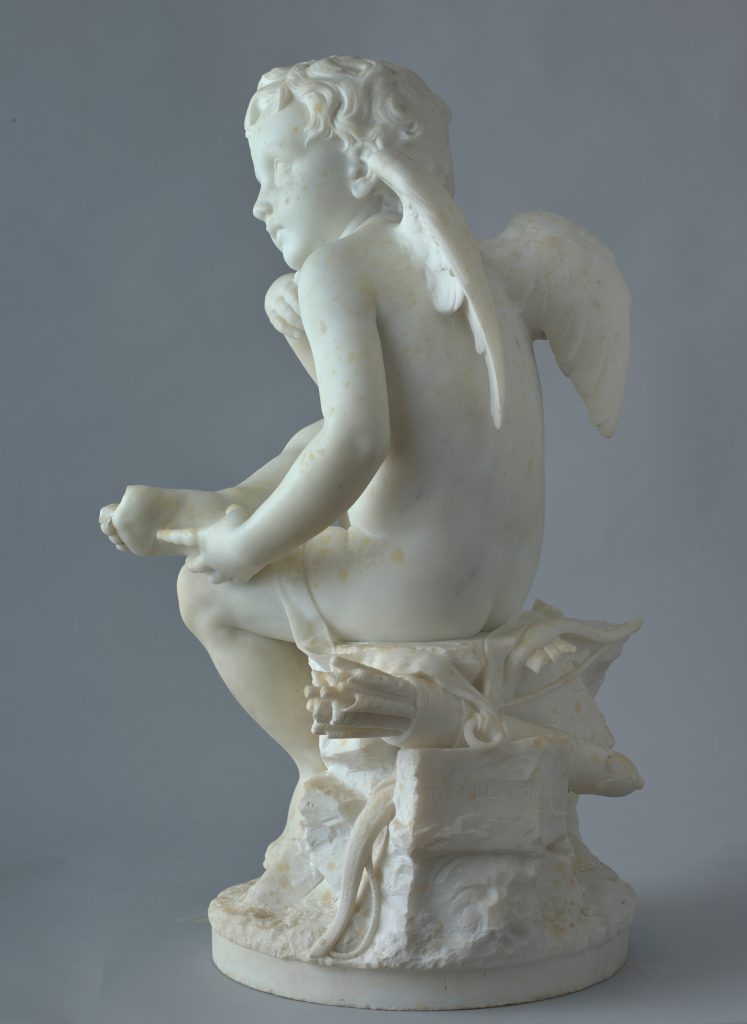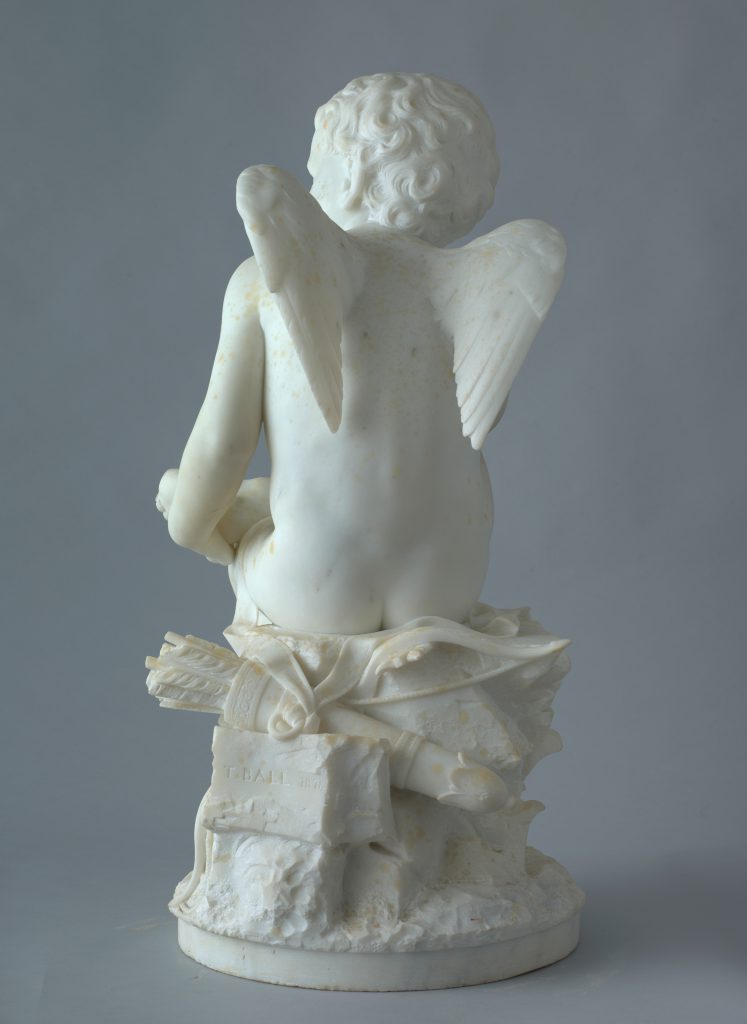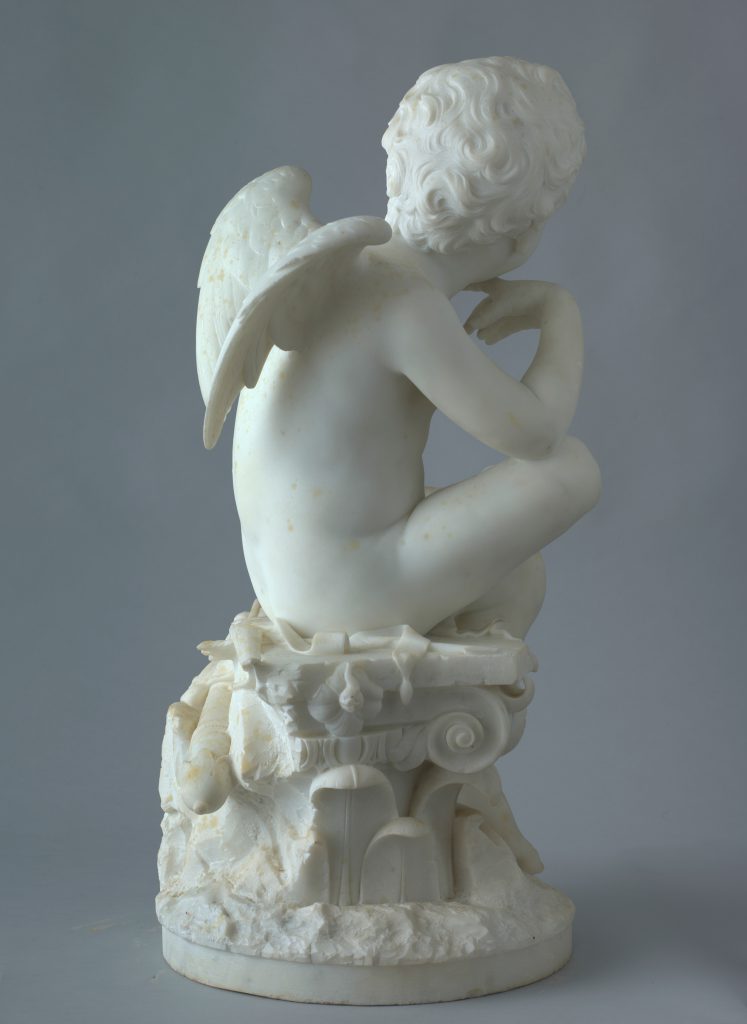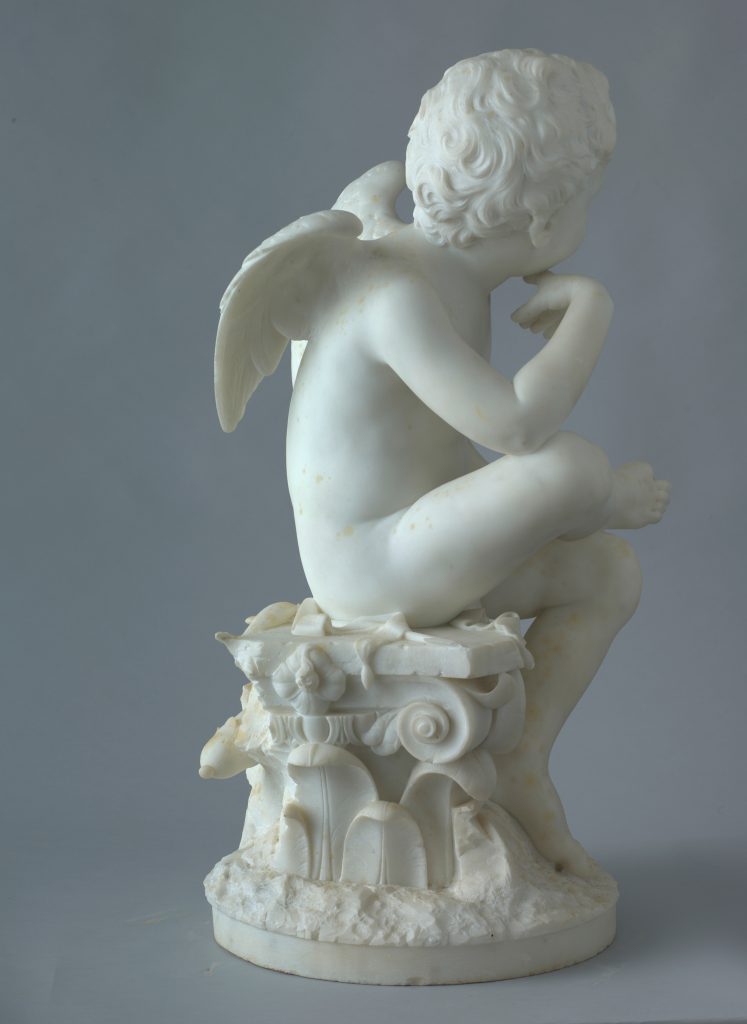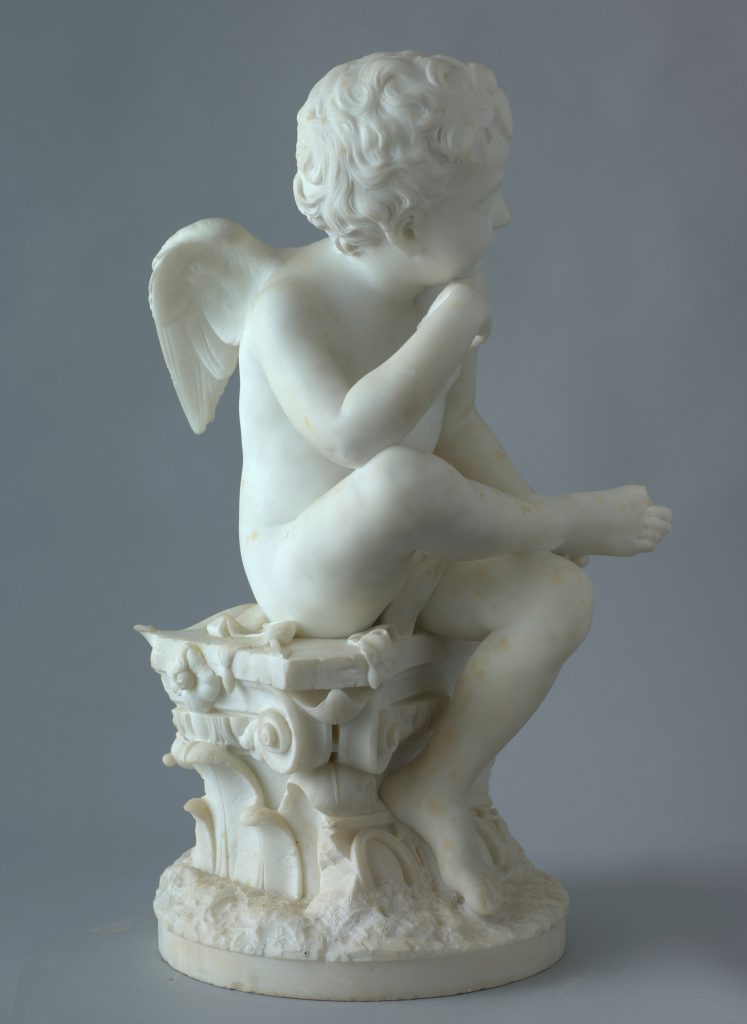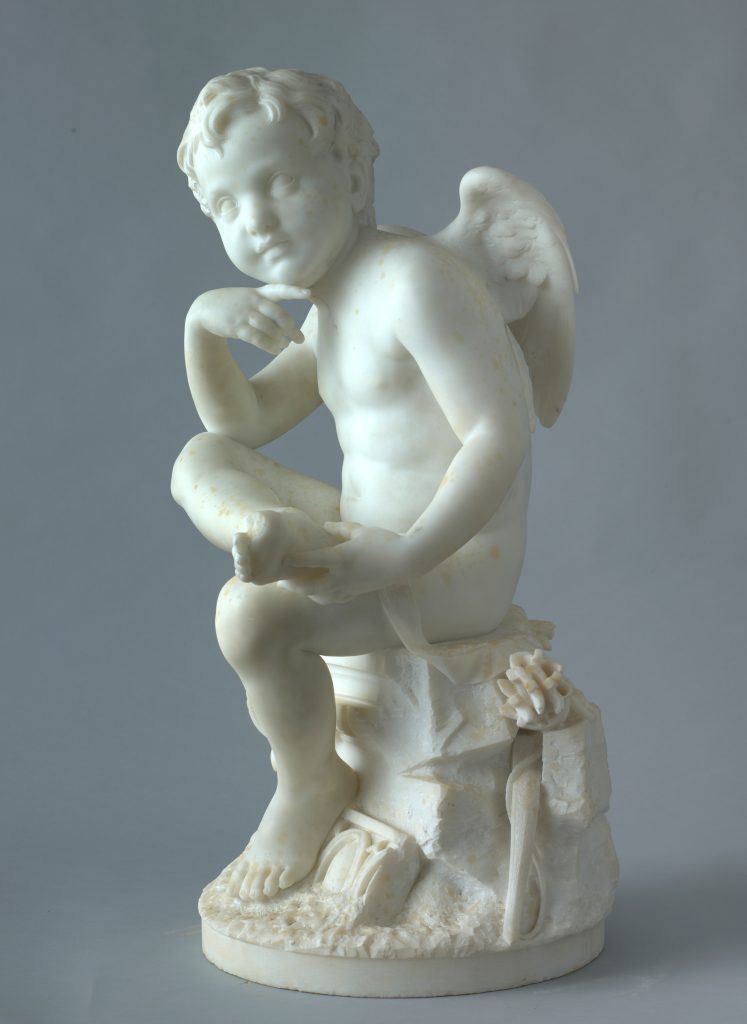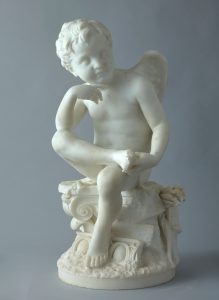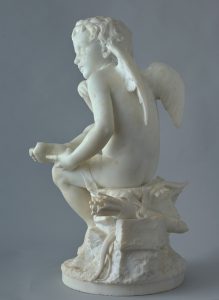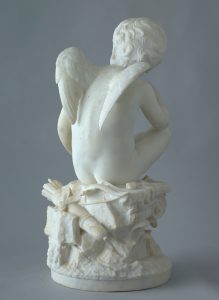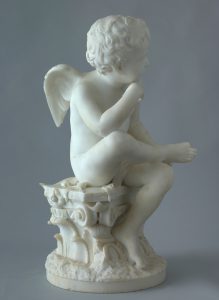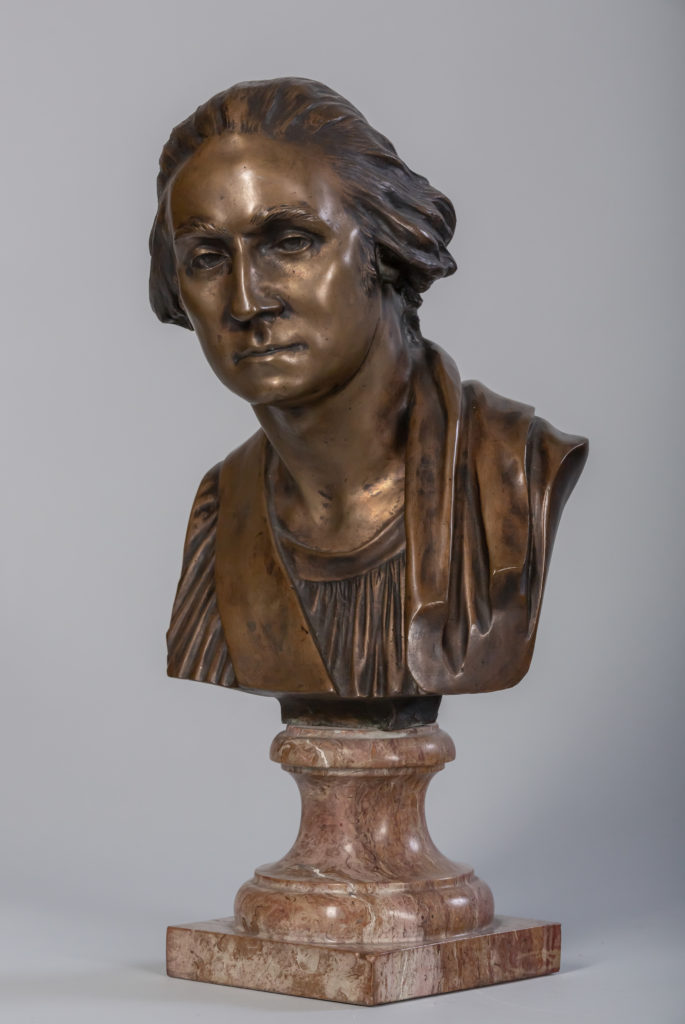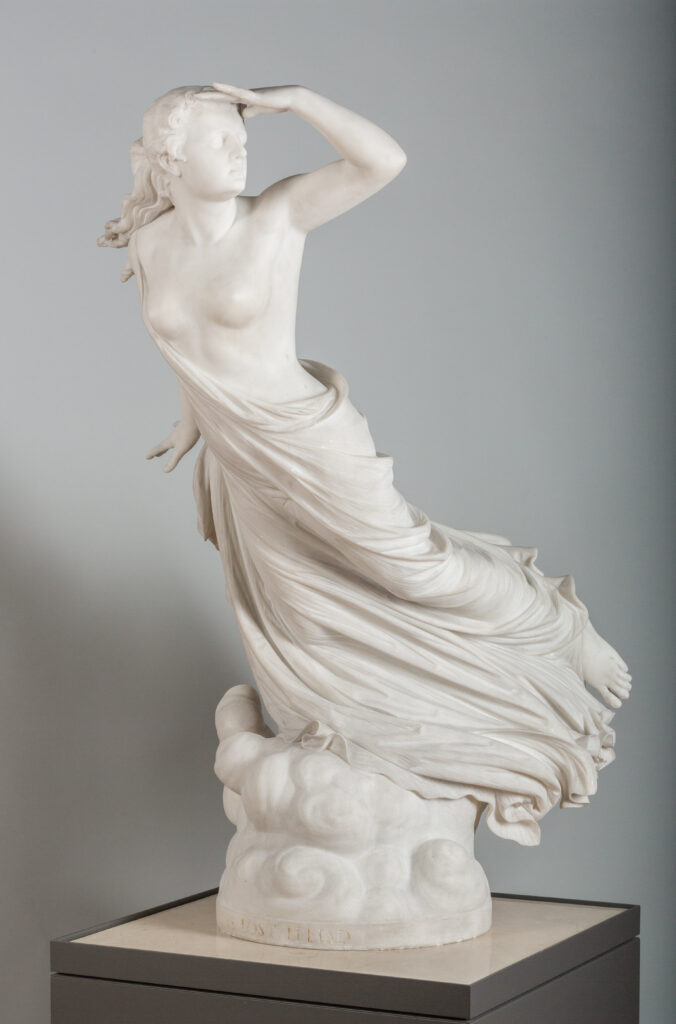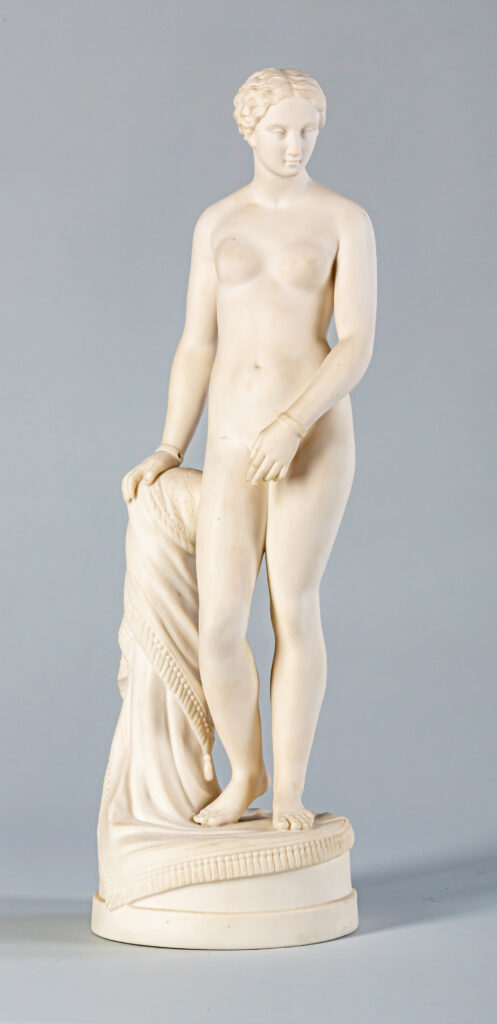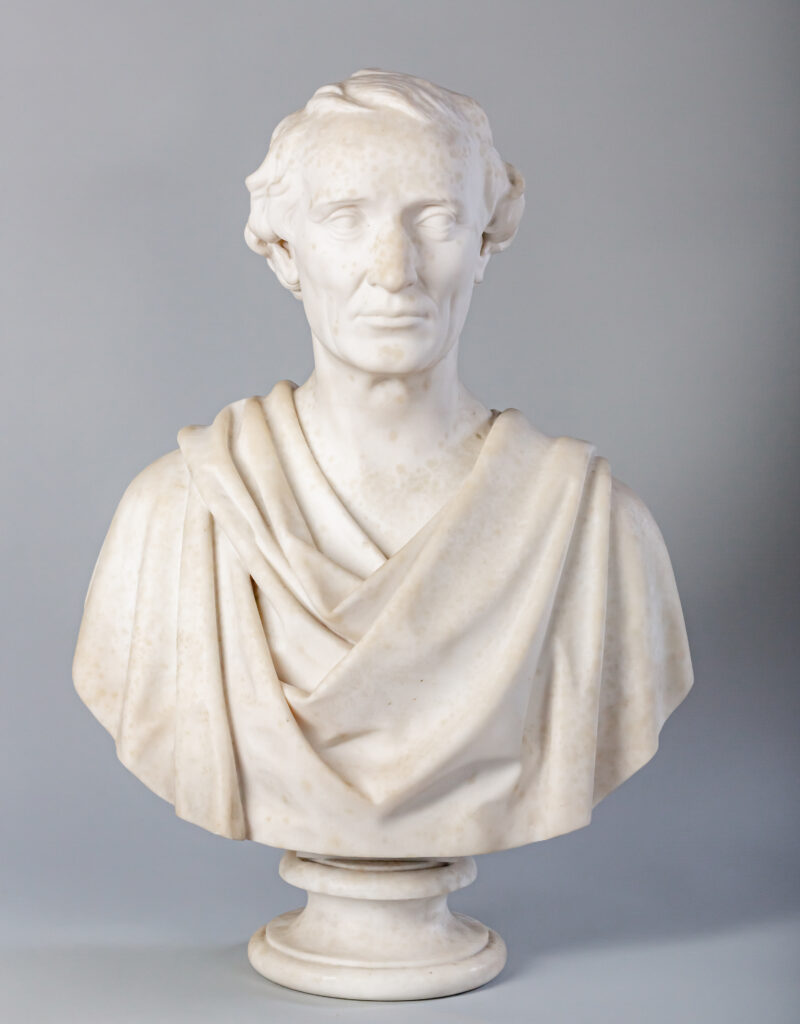Love’s Memories
Gift of Grant Walker
1903.8Thomas Ball’s career as a sculptor began in Boston and took off after he settled in Rome in 1854. In the aptly titled Love’s Memories, a winged cupid sits atop a jumble of Roman and Greek architectural fragments and ruins. These signal Ball’s creative engagement with the past as well as his formal engagement with ancient architectural forms—foundational training for many sculptors. While crafted in the realist style of the day, the figure itself is deeply classicizing in both its evocation of the popular figure cupid of ancient myth and in its pose, which was drawn from one of the most renowned and popular ancient sculptures in Rome, the Spinario. The Spinario is a Roman sculpture that depicts a young boy drawing a thorn from his foot, an intimate moment captured with great sensitivity in warm bronze. It is one of the few Roman bronzes to survive intact from antiquity and its form has been widely copied from antiquity to today.
While Ball returned to America for a period to execute his most well-known public commission, the equestrian statue of George Washington (1861–1865) in the Boston Commons, he spent the most productive years of his career in Rome and then Florence. Sculptors trained in Italy were held in high regard; his return to America had been occasioned by the death of Thomas Crawford, who had originally been awarded the commission. Like Randolph Rogers, who completed Crawford’s Washington monument in Richmond, Ball was selected to take up Crawford’s mantle. Equestrian statues originated in Ancient Greece and, during the Roman period, were popular monuments erected for military commanders and emperors. The pose of the horse and rider and the modeling of the horse in Ball’s monument may be meaningfully compared to one of the few surviving equestrian statues from the ancient world: a statue of the emperor Marcus Aurelius—at the time one of the most famous sights in Rome—standing in the Piazza del Campidoglio (located today in the Capitoline Museums).
